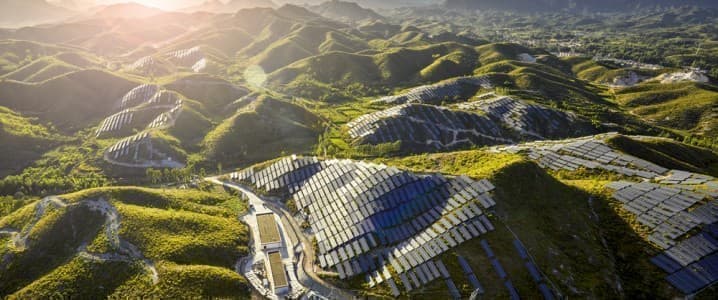Are efforts to diversify global clean energy supply chains too little, too late? For years now, China has been growing its clean energy influence at a breakneck pace, pouring huge amounts of money into its own clean energy manufacturing capacity and shoring up key energy and primary materials markets in developing countries across Asia, Africa, and Latin America. Now, the United States is finally getting serious about solidifying its own clean energy market, but it’s many years and many billions of dollars behind.
“Clean energy supply chains today are highly concentrated. China has an outsized presence. It has huge shares of global manufacturing capacity for solar PV modules and batteries (75 per cent) as well as a very strong position in the refining and processing of critical minerals,” the International Energy Agency (IEA) reported in its 2023 World Energy Outlook, a flagship report released earlier this month. “This makes the entire system vulnerable to unforeseen changes that could arise due to shifts in national policies, commercial strategies, technical failures or natural hazards.”
The global economic fallout emanating from Russia’s invasion of Ukraine and resulting energy war with Europe has underscored the enormous risk associated with being overly dependent on any single entity for energy supplies – especially a source as politically volatile and vindictively authoritarian as Russia – or China. And while the West has made great strides in the past couple of years, particularly with the renewed interest in clean energy and climate action under the Biden Administration in the United States, the rest of the world has a very long way to go toward alleviating near-total reliance on Chinese clean energy components.
According to figures from a BloombergNEF analysis released earlier this year, China was solely responsible for nearly half of global renewables spending in 2022, totalling a whopping $546 billion – nearly quadrupling the United States’ $141 billion in renewable energy sector spending. The European Union fared only slightly better, at $180 billion. And those numbers, while dwarfed by China, actually mark a major improvement for the West and for the United States in particular.
The U.S. has been trailing in the clean energy race for well over a decade at this point. Way back in 2010, a report from the President's Council of Advisors on Science and Technology warned that it was critical for the United States desperately to significantly accelerate its pace of clean energy investment, and even offered a pathway to do so. But now, nearly 14 years later, the United States is still falling behind China and Europe in green energy research, development and deployment. In fact, for three consecutive years, from 2019 to 2021, the United States slid in World Economic Forum rankings including energy security, environmental sustainability and preparedness for the energy transition. As of the last ranking of the Energy Transition Index, the United States was in 24th place.
Even as the West ramps up its efforts to compete with China in clean energy sectors, China’s own plans for expansion (on top of its already dominant supply chain presence) far outstrip the plans set forth by any other country, especially in key markets like photovoltaics and lithium-ion batteries. For the foreseeable future, any pathway to meeting renewable energy deployment goals and global climate pledges will necessarily depend on a large degree of trade with China.
Notably, while the runaway growth of the Chinese economy has shaped global energy trends over the last decade, the Chinese economy itself is changing. The growth of the Chinese economy is slowing and many of its markets are saturated. With the slowdown of industrial buildout, Chinese fossil fuel demand will lessen, and its relationships with global markets will change. But it will clearly be a very long time before its clean energy dominion is challenged in any meaningful way. Cooperation with a changing China may not be easy, but it will be critical to reaching global goals.
By Haley Zaremba for Oilprice.com
More Top Reads From Oilprice.com:
- Can Solid-State Batteries Solve The EV Revolution’s Biggest Problem?
- Green Energy Firms Grapple With Profit Plunge As Market Conditions Sour
- How The U.S. Is Pumping More Oil With Fewer Rigs


















1- China has been leapfrogging the West in every single field from technology to innovations and from economic growth to global investments and trade.
2- It is the world’s largest economy based at purchasing power parity (PPP). Its GDP at $33.0 trillion is almost 25% bigger than the United States’ at $26.5 trillion (also based on PPP).
3- Chin is the world’s largest investor in renewables. In 2022 China accounted for nearly half of global spending on renewables in spending $546 bn compared with $141 for the US and $ $180 bn for the EU billion.
4- China’s economy is the fastest growing economy among the major economies of the world growing at four times the growth rate of the United States’ and eight times the EU’s. Therefore, claims about a slowdown in China’s economy are myths. If its manufacturing sector slows down in one month, it is more than offset by growth in the services and other sectors.
5- China’s economy has been for years driving global energy consumption and trends and will continue to do exactly that well into the future.
6- China’s Belt and Road Initiative (BRI) will continue to shape the global economy and help expanding it along with China’s economy.
Dr Mamdouh G Salameh
International Oil Economist
Global Energy Expert